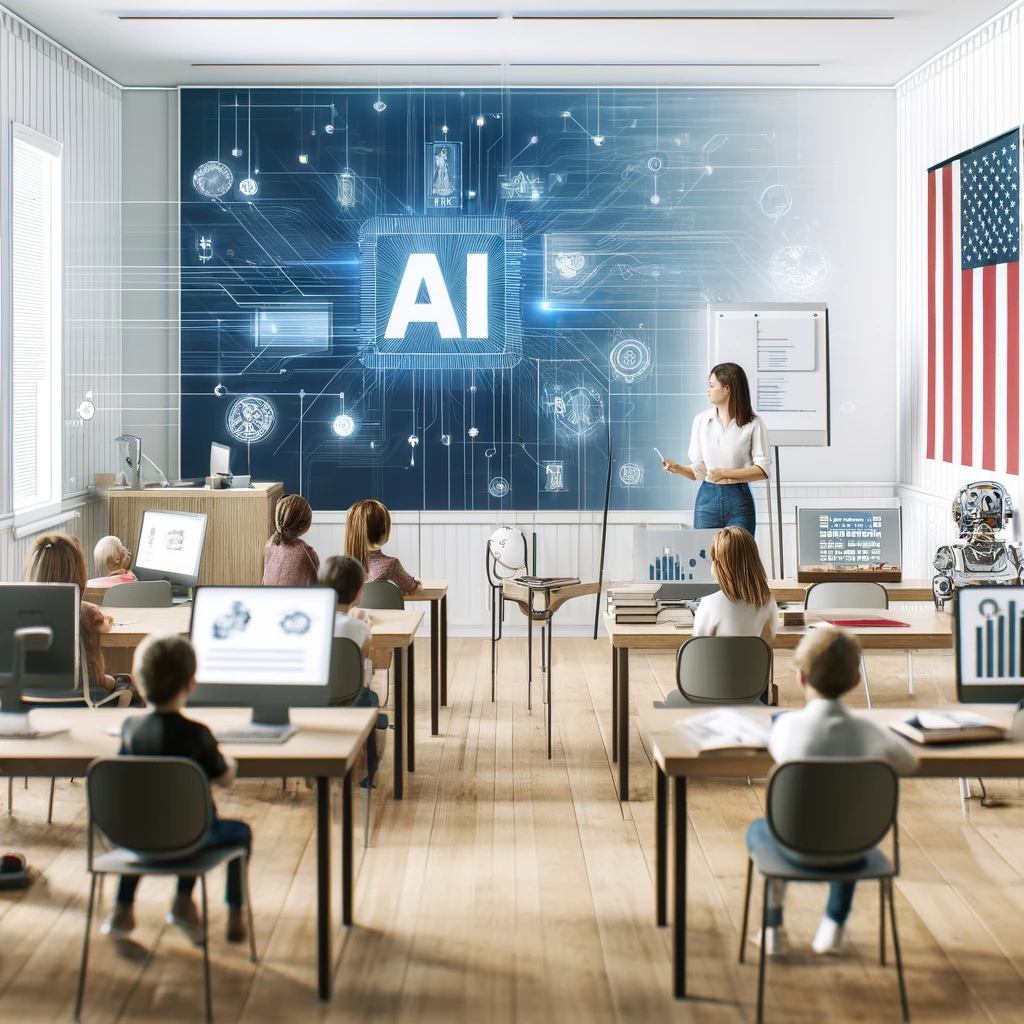AI Education is becoming a hot topic in the United States, and for good reason.
Artificial intelligence is rapidly transforming every aspect of society, from the way we do business to the way we communicate and entertain ourselves.
But is the US education system ready for this revolution?
We will explore the challenges and opportunities for AI education in the United States and how policy can influence this landscape.
Browse the content

The Importance of AI Education
There’s no denying it: AI is here to stay. And as this technology advances, the demand for skilled professionals will only increase.
But the question is: are we preparing our young people for this future? The short answer is: not enough.
AI education must be a priority to ensure the United States remains at the forefront of technological innovation.
Why is AI so important?
AI has the potential to revolutionize virtually every industry:
- Health: Faster and more accurate diagnoses, personalized treatments.
- Transport: Autonomous vehicles, traffic optimization.
- Finances: More accurate market forecasts, fraud detection.
- Education: Personalized learning tools, virtual tutors.
Without a solid foundation in AI, the United States risks falling behind in an increasingly competitive global landscape.
Challenges in AI Education
Lack of Qualified Teachers
One of the biggest challenges is the lack of qualified teachers to teach AI.
Most educators do not have specific training in AI, and those who do are often lured into the private sector with higher salaries. This creates a significant bottleneck in the dissemination of knowledge about AI.
Outdated Resume
Another problem is outdated curricula. Many schools are still stuck with traditional teaching methods that don’t include AI or other emerging technologies.
We need an educational reform that incorporates AI from the early years of school through to university.
Inequality of Access
Inequality of access to technological education is a critical problem.
Schools in wealthier areas tend to have better resources, including computer labs and access to technology courses.
Schools in disadvantaged areas often lack the basics, creating an even greater educational gap.
The Role of Policy in AI Education
Investment in Education
To address these challenges, significant investment in education is essential.
Public policies should prioritize funding for AI education programs, from teacher training to updating curricula and infrastructure.
Incentives for Teachers
To attract and retain qualified AI teachers, incentives such as bonuses, professional development opportunities, and partnerships with technology companies can be offered.
This would help create an educational workforce capable of preparing students for the future.
Public-Private Partnerships
Partnerships between the government and the private sector can be an effective solution.
Technology companies can provide financial support and expertise to develop educational programs, while the government can facilitate these partnerships with favorable policies.
Success Stories
Local Initiatives
Some cities and states are already leading the way.
In California, for example, several public schools have implemented AI programs in collaboration with Silicon Valley companies.
In New York, local initiatives are focused on bringing technology education to schools in underserved areas.
Federal Programs
The US federal government is also beginning to move in this direction.
The White House has launched several initiatives to promote STEM (Science, Technology, Engineering, and Math) education, including AI.
While there is still much work to be done, these initiatives are important steps in the right direction.
The Future of AI Education
Continuous Adaptation
AI education cannot be static; it must evolve along with technology.
This means that curricula and teaching methods need to be constantly reviewed and updated to reflect the latest advances in the field.
Inclusion and Diversity
Ensuring that all students have access to quality AI education is crucial.
This includes promoting diversity in STEM and working to eliminate barriers that prevent underrepresented groups from entering these fields.
Lifelong Education
AI isn’t just for young students. As technology evolves rapidly, lifelong learning becomes essential. Reskilling and upskilling programs must be available to workers of all ages to ensure they can adapt to the changing job market.
My Opinion
I believe that AI education is critical to the future of the United States.
Without a well-educated and prepared workforce, we risk losing our technological leadership position.
Policy has a crucial role to play here, from funding to creating policies that encourage educational innovation.
What We Need to Do
- Increase Investment: We need more resources dedicated to AI education.
- Update your CV: Schools need modern curricula that include AI and other emerging technologies.
- Train Teachers: Invest in the training and retention of qualified AI teachers.
- Ensuring Equality of Access: All students, regardless of their socioeconomic background, should have access to quality AI education.
Conclusion
AI education in the US faces significant challenges, but it also offers enormous opportunities.
With the right support from public policy and the private sector, we can prepare our young people for a bright future in a world increasingly dominated by artificial intelligence.
For technology thought leaders, it is time to put AI education at the top of the agenda and work together to ensure the United States continues to lead global innovation.
